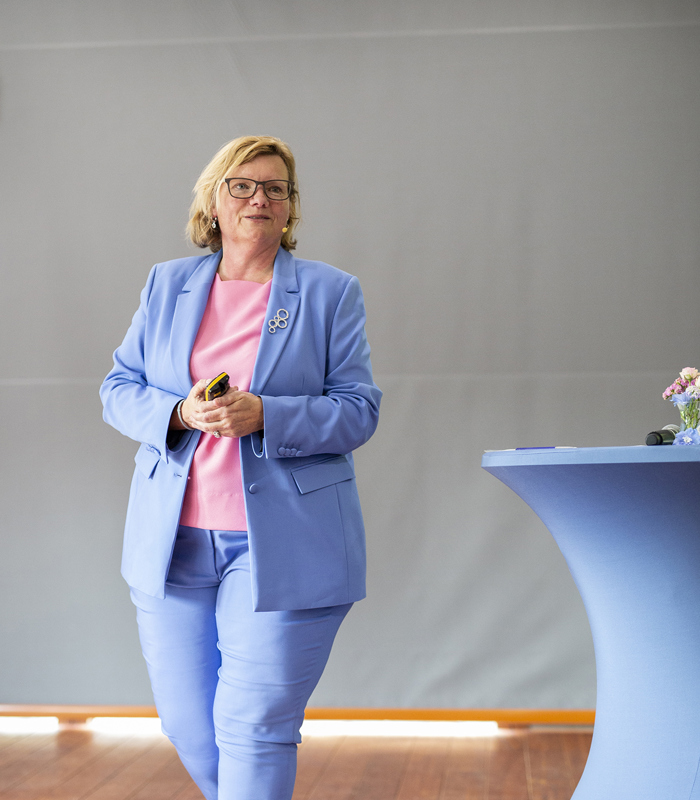On Tuesday 4 June, Professor Antien Zuidberg of the lectureship Design Methods in Food delivered her inaugural lecture at HAS University of Applied Sciences in ‘s-Hertogenbosch on the subject of design thinking, entitled ‘What U Design = How U Design’.
According to Antien, the design process chosen is important for the quality of the end result and, therefore, the overall success of a product as well as its success in the market. “Design thinking is about diving into the world of the consumer and carrying out research into the issues they’re facing. You then come up with the best possible solution to address these issues. This solution can be designed on a concept level, service or company level, or even at a system level.”
Visiting professor at Harper Adams University
Special guest during the festive gathering was David Llewellyn, Vice Chancellor at Harper Adams University in England. HAS University of Applied Sciences has a strategic partner agreement with Harper Adams, and the 2 institutions have been working closely together for several years. Both universities have appointed 2 visiting professors to visit the other institution, give guest lectures and promote projects. Antien is one of these professors. “As a guest professor, my role is to actively focus on the interaction between students and lecturers, and start new joint research programmes between them.” David Llewellyn and HAS University of Applied Sciences Chair of the Board of Governors, Dick Pouwels, had the honour of introducing Antien.
Designing tools
During her lecture, Antien spoke extensively about her mission to spread design thinking throughout HAS University of Applied Sciences and about designing simple and elegant tools for students and companies, with the aim of making the design process simpler. The example she gave was her own development process as a professor using a fairytale-like animation.
Design model transition
Antien also showed that the Food Innovation model developed by the study programme Food Innovation, can be best used for incremental innovations (small innovation steps, for example a different packaging or a new brand). Having noticed that there is significant demand for a design model for transition and changing thinking patterns, Antien wants to carry out research to see if a second innovation model is achievable and desirable. This model, with the working title ‘Design 4 Change’, focusses on designing healthy and sustainable food concepts and systems. Antien is developing this model together with the lectureship team, students and other lectureships from HAS University of Applied Sciences.
Final-year projects
During her inaugural lecture, special attention was given to final-year projects being carried out within the lectureship programme. One such project is by Hidde Jolink, 2nd year student on the study programme Animal Husbandry & Animal Care. He explained that the agricultural sector needs creativity to stay future proof and that design thinking could be very important in this. Hidde was followed by a group of students working on the development of a simple tool that can support HAS start-ups in realising market success for their idea.
Innovation Pathfinder
A third group of students presented the vegetable innovation scan, which can measure the effect innovative plant-based products have on health. They used the scan to carry out research into the use of temptation in vegetable innovations, for example. The fourth group of students demonstrated their efforts to pitch a business case for 3D-food printing in the healthcare sector, for elderly people with difficulties chewing and swallowing. Finally, Antien presented a prototype of the Innovation Pathfinder, which helps students in planning and supervising the steps they need to take during their project.
Thrilled
At the end of her lecture, Antien said that she was thrilled to be able to show the knowledge gained so far and tools that have been developed with lecturers and students: “I hope to infect as many people at HAS as possible with design methods, and invite everyone who would like to know more to get in touch with me.”



